Faculty of Information Design, Department of Information Systems Engineering
A people-friendly information society.
Faculty of Information Design, Department of Information Systems Engineering
A people-friendly information society.
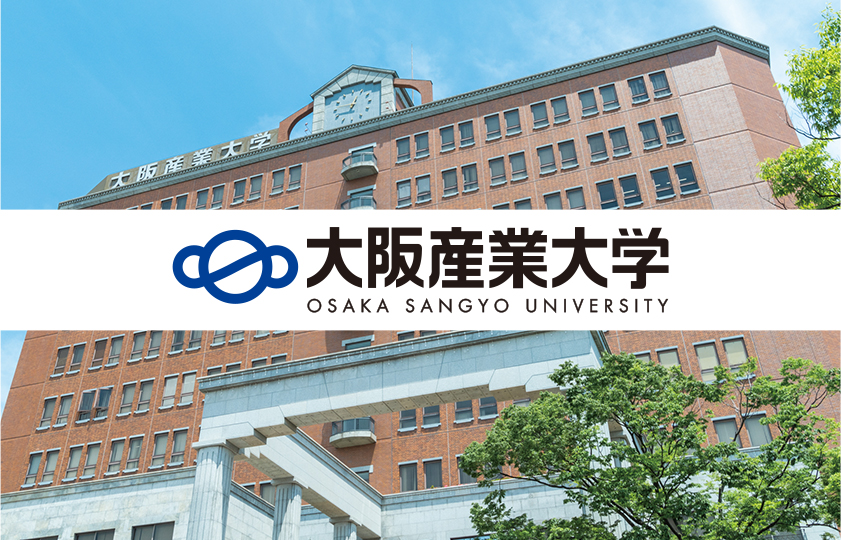






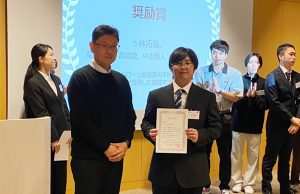


We aim to train talent who will be involved in the design of information systems that are the foundation of modern society.
Specifically, based on a foundation of mathematics and data science, students will learn a wide range of subjects, from systems engineering, primarily in the field of information and communication engineering, to media engineering, primarily in the fields of sensitivity, sound, and images, to become engineers and creators who can realize "the creation of things and experiences that are kind to people."
01
"Make" and "Use".From both sides of design,
Cultivating information systems leaders.
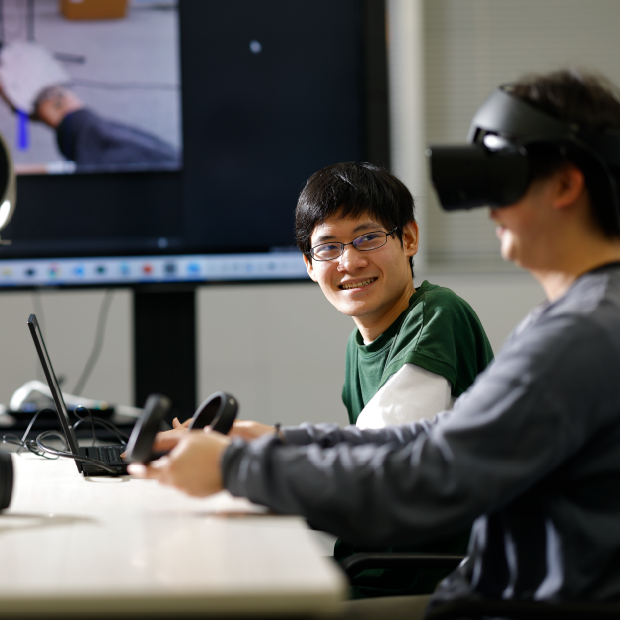
"Means of delivering to users" such as hardware and systems, and the content delivered through them (services, websites, games, etc.). Currently, these are intricately intertwined, giving rise to a wide variety of occupations. Furthermore, there are "makers" and "users" of these. We will nurture creators and bearers of information that is friendly to everyone in every aspect.
02
Cultivate problem-finding andtechnical problem-setting abilities
Practice-based learning (PBL) subjects.
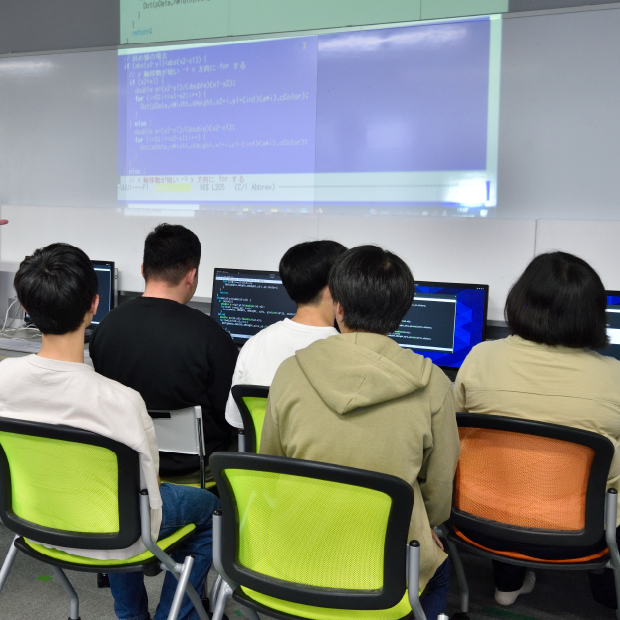
By starting their practical training in their first year, students will be able to understand what they are interested in and what they should focus on in their studies. For example, in their first year, students will make a proposal to a major manufacturer that is trying to create a systemized toothbrush (the judges and commentators will also be from the manufacturer). They will use the sense of accomplishment and reflection they gain from this to gain real-world experience in their second, third, and fourth years, changing the theme each year.
03
Information professionals.Proposing information design and
Towards human resources who can utilize information systems.
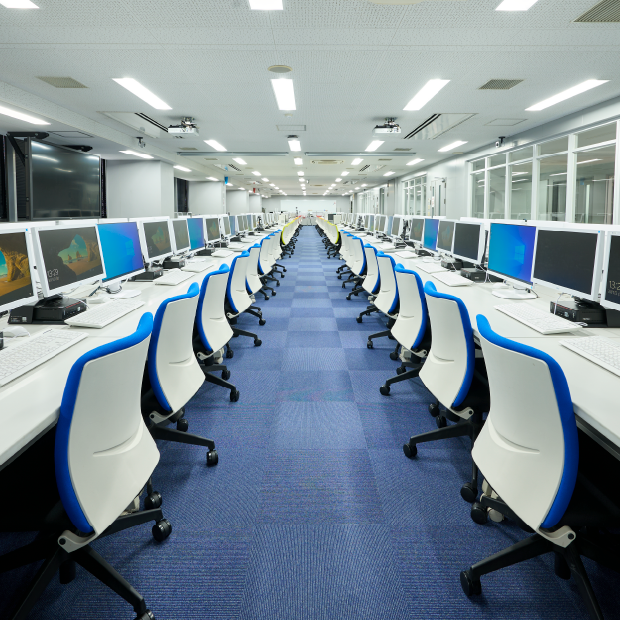
In the fourth year, students will work on their graduation research. For example, they will solve real problems in collaboration with actual companies and organizations, such as nursery schools and car repair companies. Some projects will last several years, and will contribute to society as they are passed down from senior students to junior students. The employment rate of the seniors from the faculty that was the basis for the reorganization of this faculty is high, and they work in a wide range of fields.
From the design of information systems to the design of the presentation of the information itself.
There are a wide variety of learning opportunities and career paths available.


Haruki Murata
IT technologies and ideas that are useful in a wide range of fields
It's fun to deepen my knowledge through practice every day!
In the first year, students learn multiple programming languages, such as C, and in the second year, Java and Python. They hone their specialized knowledge and skills through various assignments, such as creating games. They think for themselves, write the code to be executed by the computer, and test whether it works as instructed. After many trial and error attempts, they feel a great sense of accomplishment when it works as expected.
From the experience of sharing ideas about computerization in the nursing care field in the "Field Practice" class, I became interested in building systems for nursing care facilities. At first, I was interested in games, but in the future, I would like to turn my attention to a wide range of fields and contribute to many people and society as an engineer involved in system design and development.
This department has an environment where you can study a wide range of subjects, including web development, game development, embedded systems, etc. Since you will be following textbooks and materials, even those with no experience can feel at ease if you have an interest in games and IT.
An example of a lesson
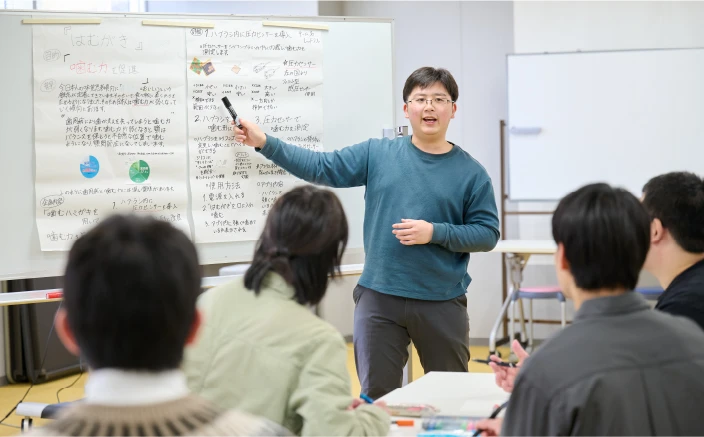
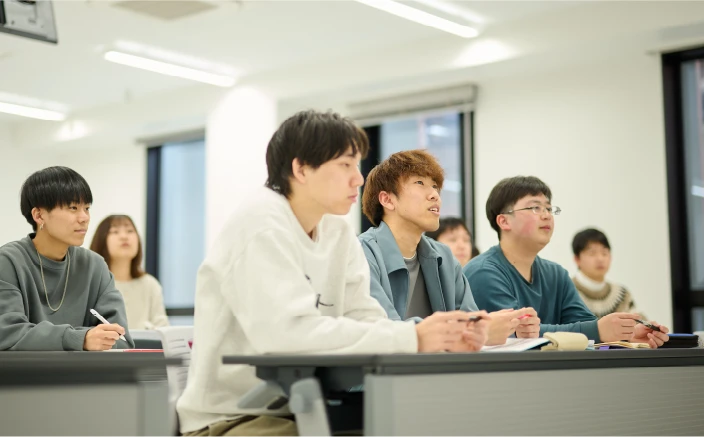
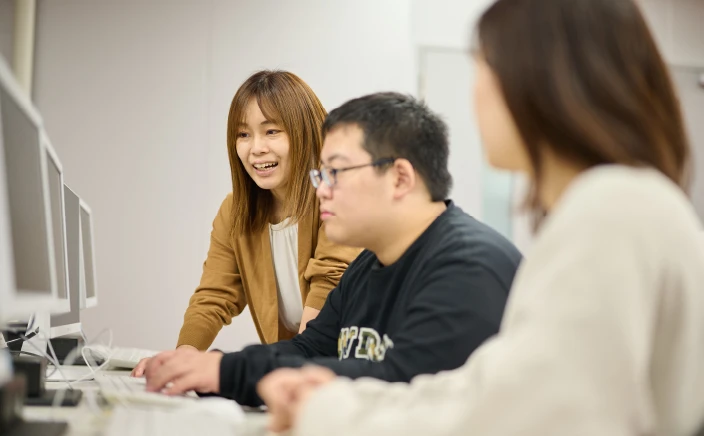
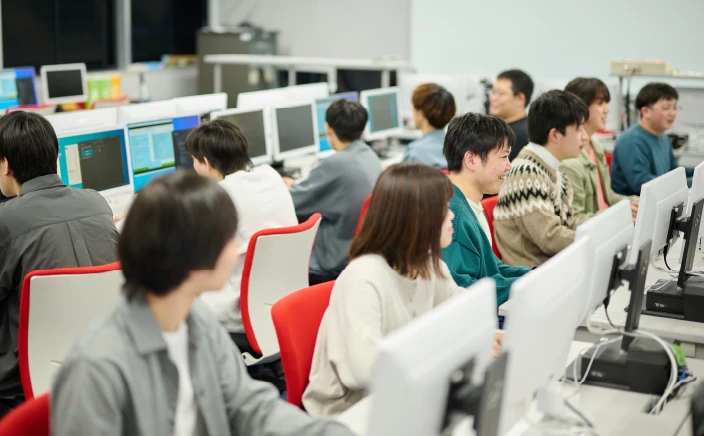
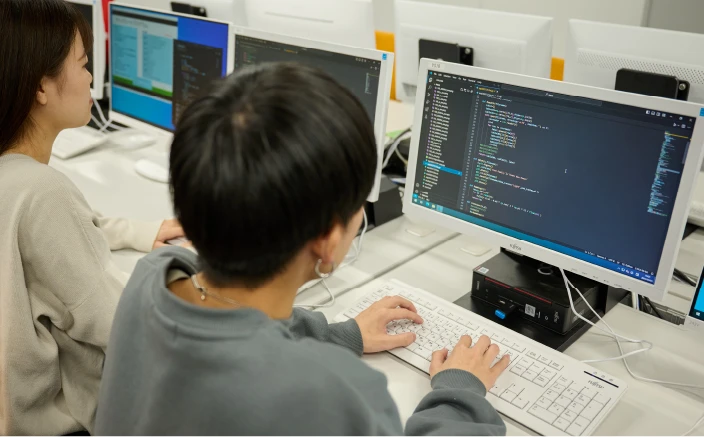
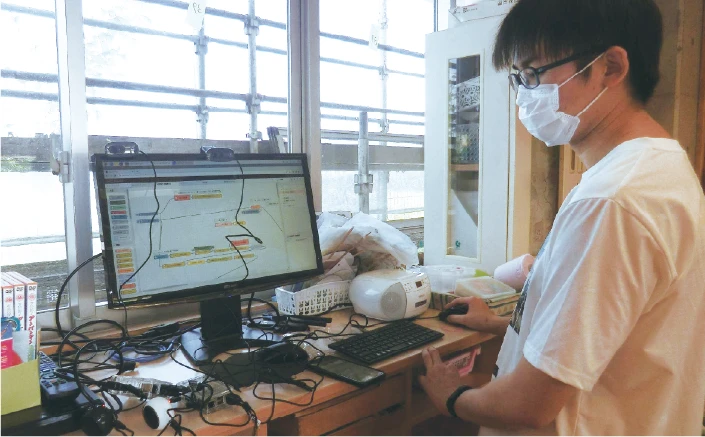
Private enterprises
Altoner Inc. / Internet Initiative Japan Inc. / NRI Data i Tech Co., Ltd. / NEC Networks & System Integration Corporation / NTT Data SBC Corporation / NTT Data NJK Corporation / NTT Technocross Corporation / NTT Field Techno Corporation / Ebara Corporation / Ehime Bank Ltd. / Otsuka Shokai Co., Ltd. / OKI Crosstech Co., Ltd. / ORIX Facilities Corporation / Canadavia Corporation (formerly Hitachi Zosen Corporation) / Kintetsu Cable Network Co., Ltd. / Kinden Corporation / Kinden Spinet Corporation / Coca-Cola Bottlers Japan Inc. / Cosmos Pharmaceutical Co., Ltd. / Cyberlinks Inc. / Sakura Internet Co., Ltd. / CNS Co., Ltd. / JR West Techsia Co., Ltd. / JFE Systems Corporation / JCOM Corporation / Systena Corporation / Shima Seiki Co., Ltd. / Japan System Co., Ltd. / Information Systems Audit Co., Ltd. / Johnson Controls Japan Inc. / Smart Value Inc. / Seiryo Electric Co., Ltd. / SoftBank Corp. / Takara Rentax Group Holdings Co., Ltd. / TIS System Services Co., Ltd. / DENSO TEN Co., Ltd. / Tokushukai Information System Co., Ltd. / Docomo CS Kansai Inc. / transcosmos inc. / IBM Japan Digital Services Co., Ltd. / Persol AVC Technology Co., Ltd. / Hanshin Expressway Patrol Co., Ltd. / Hitachi Astemo Co., Ltd. / Fujisoft Co., Ltd. / Fujitsu Network Solutions Co., Ltd. / Fujitec Co., Ltd. / Fujifilm Business Innovation Japan Co., Ltd. / Furnosoftec Co., Ltd. / Mynavi Co., Ltd. / Mitsubishi Electric Software Co., Ltd. / Mirait One Co., Ltd. / Meitec Co., Ltd. / Daiwa Shinkin Bank / Yodobashi Camera Co., Ltd. / Ricoh Japan Co., Ltd. and others
public sector
Osaka Prefecture, Kyoto Prefecture, Hyogo Prefecture Junior High Schools / Osaka Prefectural Police Headquarters / Japan Meteorological Agency / Ministry of Defense Self-Defense Forces, etc.
Osaka Sangyo University Graduate School
Osaka Sangyo University Osaka Sangyo University Graduate School / Kansai Osaka Sangyo University Graduate School etc.

National qualification
Qualifications that can be obtained at the same time as graduation
*1 It is necessary to complete the required course credits in the teacher training course.
Qualifications you would like to aim for while attending school or after graduation
*2 You must earn at least 62 credits required for graduation requirements.
Public/private qualifications
Qualifications that can be obtained at the same time as graduation
*3 Requires completion of specific subjects and graduation.
Qualifications you would like to aim for while attending school or after graduation
Educational and research objectives
The Faculty of Information Design aims to train talent who can be involved in the design of information systems that form the foundation of modern society, based on the belief that "creating things and experiences that are friendly to people" will promote empathy and mutual understanding among people and make society a safer and more secure place.
Specifically, information system design has two aspects: design for "creation" and design for "use," and it is necessary to understand both aspects, especially for "people-friendly" information systems. In design for "creation," students incorporate techniques to understand users, learn primarily about information and communication technology, and train engineers involved in the design, construction, and operation of information systems, while in design for "use," students learn basic information and communication technology, then learn media technology that people use from systems and techniques to understand users, with the goal of training personnel who can propose and utilize people-friendly information systems.
Educational goals and three policies